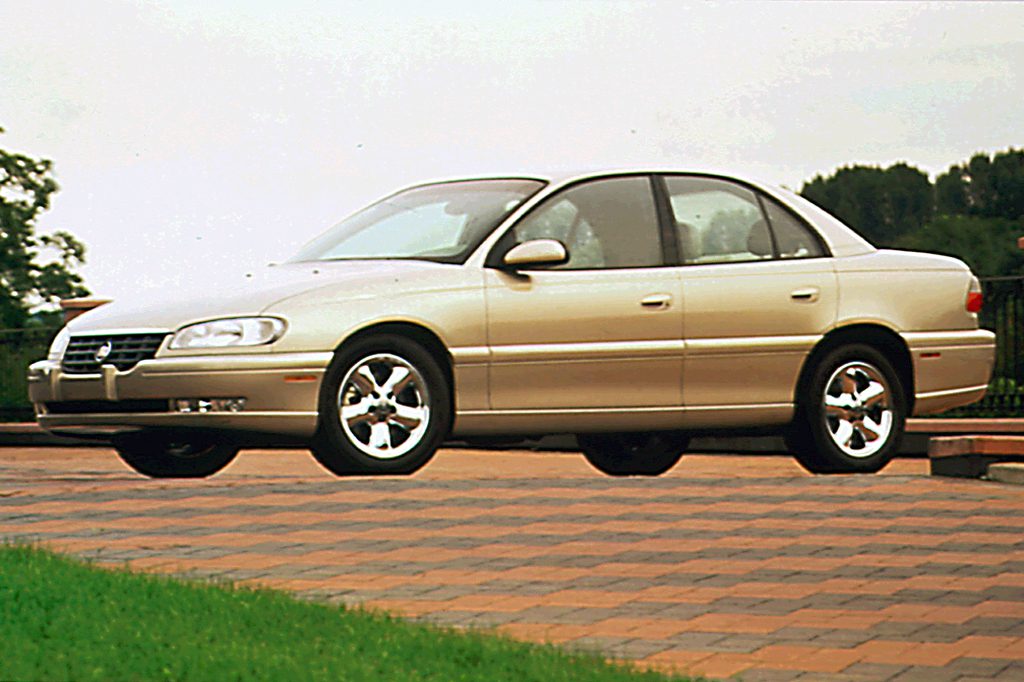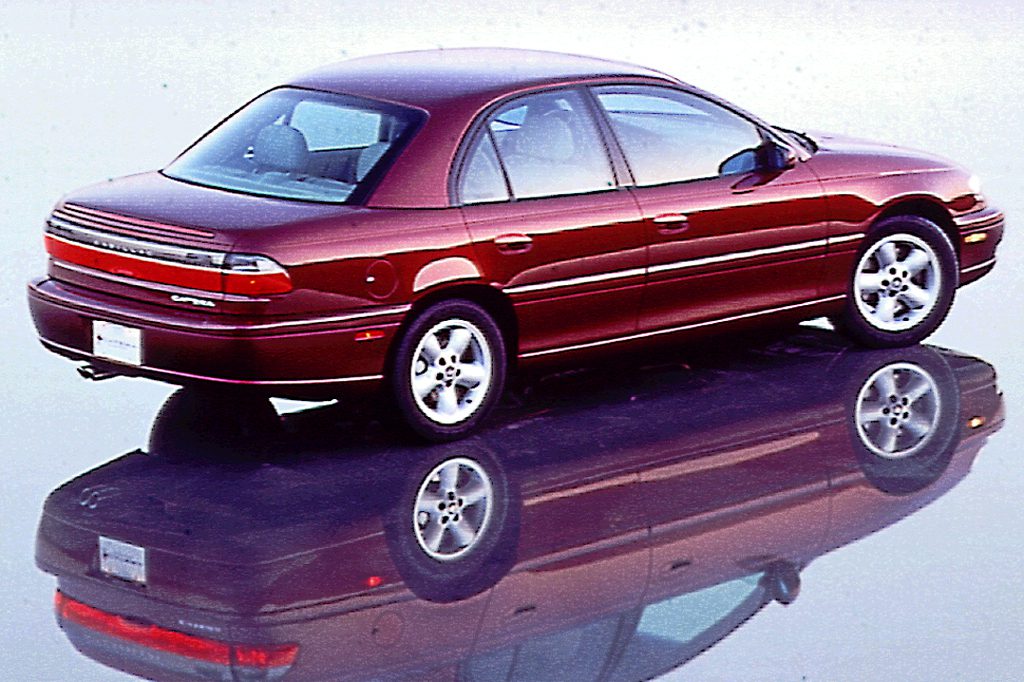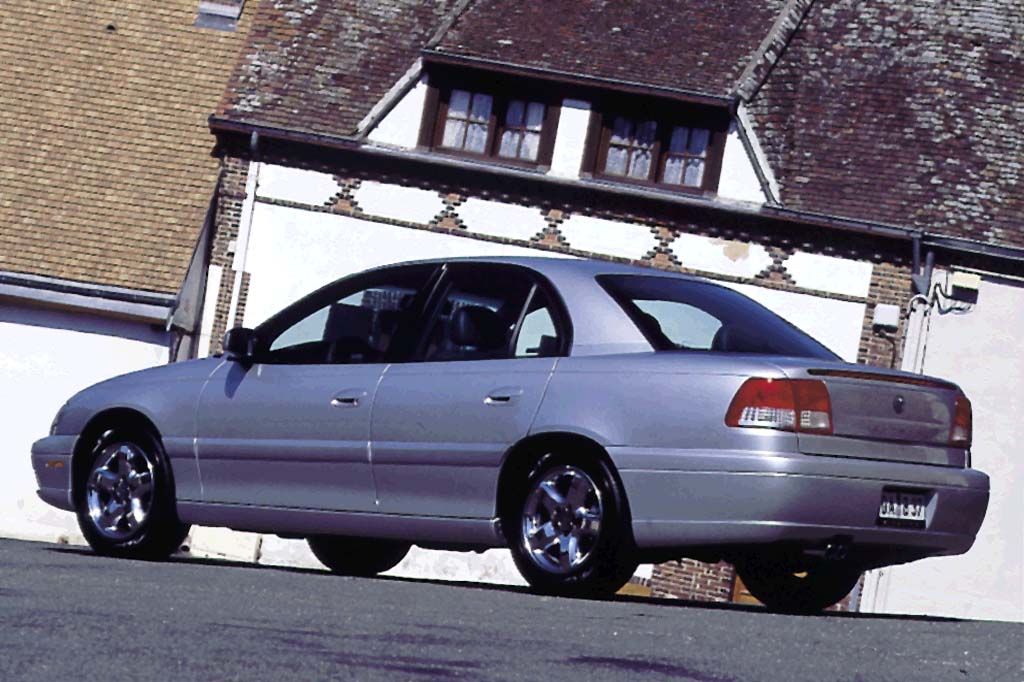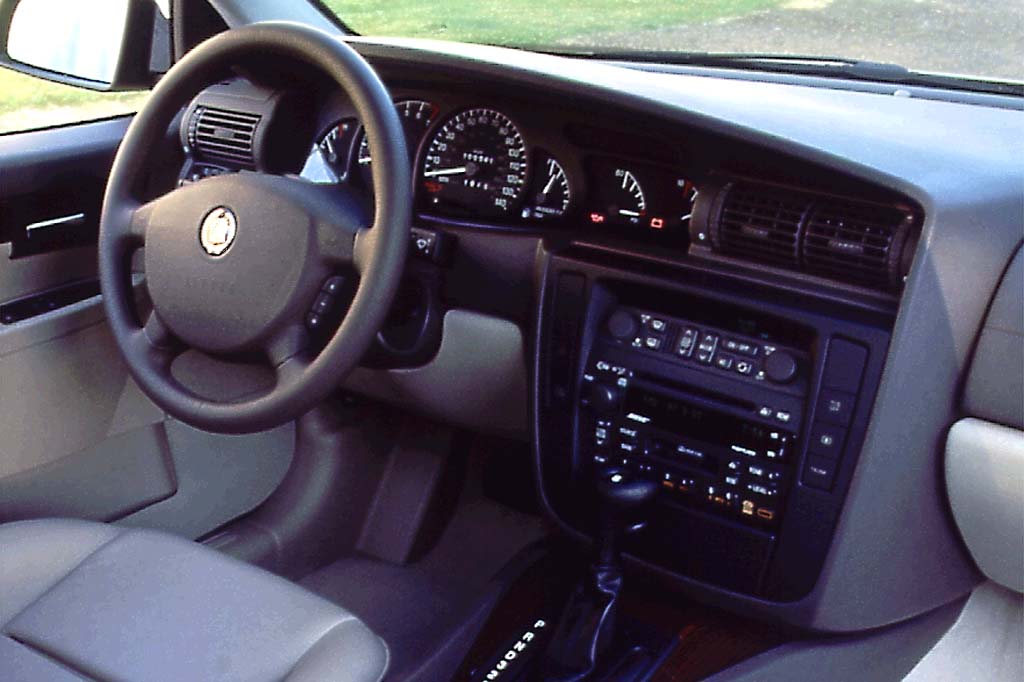| Premium compact car; Built in Germany |
|
|
| Good condition price range: $1,500 – $3,200* |

1997 Cadillac Catera

1999 Cadillac Catera

1999 Cadillac Catera interior

2000 Cadillac Catera

2000 Cadillac Catera interior
| Pros: |
|
| Cons: |
|
Quiet-running and solid-feeling overall, loaded with standard equipment, Catera also offers a relatively spacious interior and competent road manners. It ranks only average for ergonomics, visibility, and entry/exit. Still, Catera has been a fresh approach for Cadillac, which needed something special. This one is worth a look, especially since slow new-car sales often translate to lower used car prices. In short, good deals might be found.
Overview
Produced in Germany from an Opel design, Catera was intended as a different kind of Cadillac for the late 1990s. (Opel is a General Motors subsidiary.) Foreseeing that “near-luxury” compact/midsize sedans might be the fastest-growing segment of the market, Cadillac turned to GM’s German Opel subsidiary for a European-themed entrant into that race. Based on the Opel Omega, Catera was now Cadillac’s only rear-wheel-drive model, and also the only without a V8 engine. An Opel 3.0-liter V6, rated at 200 horsepower, worked with a 4-speed automatic transmission. Antilock brakes, dual front airbags, daytime running lights, and traction control were standard, but side airbags were unavailable. Standard equipment also included a dust and pollen filter, 16-inch alloy wheels, power windows with express up/down, fold-down rear seat, tilt steering wheel, electrochromatic mirror, power seats, programmable power locks, a theft-deterrent system, steering-wheel-mounted radio controls, and automatic climate control. Leather upholstery and a power sunroof were among the few options, along with front and rear-seat heaters, chrome wheels, and an 8-speaker Bose sound system. Near-luxury rivals included the front-drive Infiniti I30 and Lexus EX 300, as well as the rear-drive Mercedes-Benz C-Class and BMW 328i.
Yearly Updates
| 1998 Catera A power rear-window sunshade joined the option list for 1998. At the same time, the extra-cost Bose audio system gained radio data system (RDS) capability. It was now able to display such broadcast information as station call letters and song titles, as well as to break into programming with emergency broadcast system alerts. Dealers could now install GM’s OnStar system, which linked the car via satellite and cellular telephone to a 24-hour GM center. Advisors at the center provide directions and travel advice, and can notify local authorities in an emergency. |
| 1999 Catera Catera became the first Cadillac to meet low-emissions vehicle (LEV) standards, but otherwise changes were few this year. Sport models now were equipped with side airbags. |
| 2000 Catera Styling was freshened for 2000, and Catera gained a revised interior as well as suspension modifications. Sport models came with a rear spoiler, high-intensity headlamps, and heated seats, as well as a matte chrome grille and new 17-inch tires in place of the customary 16-inchers. All Cateras now had side airbags, as well as new cupholders and upper child-seat anchors in the rear. The previous year’s firmer Sport suspension now went into base Cateras, while the Sport edition gained even tighter calibrations. |
| 2001 Catera For 2001, solid rear brake discs were replaced by vented ones. |
